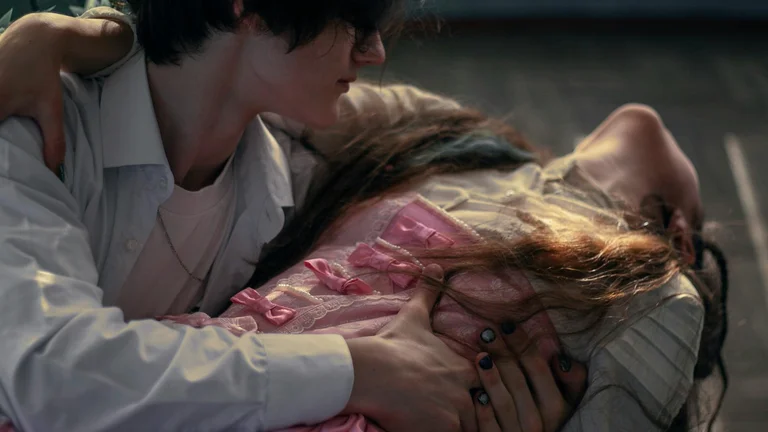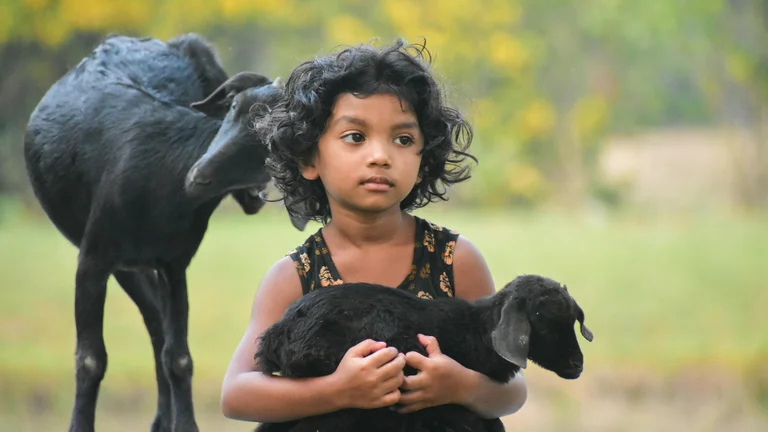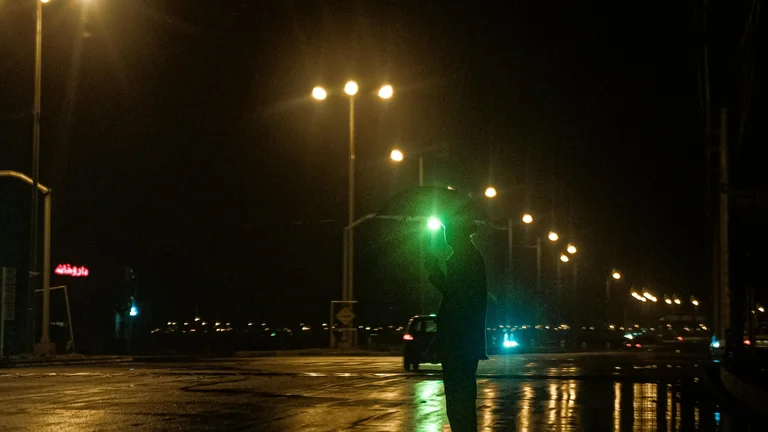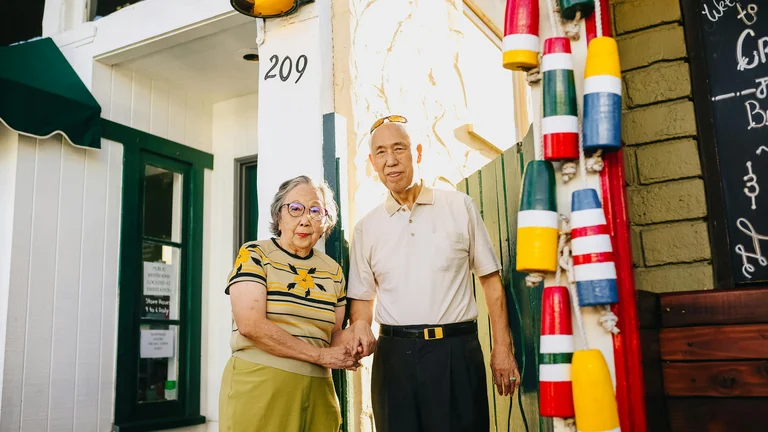Understanding the Cultural Significance of "Holding the Wrist" Scenes in Korean Dramas

"Holding the wrist" is an iconic physical gesture frequently portrayed in Korean dramas, Japanese dramas, and other Asian media, although it holds distinct significance in Korean storytelling. In Korean dramas (K-dramas), this simple yet powerful touch conveys a range of emotions and intentions — often signaling urgency, protection, restraint, or romantic tension. It serves as a cinematic language that complements dialogue, providing viewers with an additional layer of emotional context. Unlike a generic touch or a hand-holding scene, holding the wrist suggests a specific type of connection, demonstrating control or concern while preserving personal boundaries.
From a cultural perspective, the wrist is sometimes viewed as a vulnerable yet intimate part of the body, linking the hand to the arm and symbolizing the connection between action and intention. This gesture, therefore, carries metaphoric weight — it reflects both physical control and emotional restraint, hinting at the complexity of interpersonal relationships.
In many K-dramas, holding the wrist often marks a turning point in the character dynamics. It can be a subtle way of interrupting someone's departure, a safeguard against danger, or a demonstration of possessiveness or protectiveness. The tension created by this action draws the viewer’s attention to the underlying emotional currents, enhancing storytelling depth. Understanding this gesture's cultural resonance helps explain why it has become such a staple in K-drama plotlines and how it effectively evokes empathy and emotional investment from audiences worldwide.
Iconic Examples of "Holding the Wrist" Scenes in Popular Korean Dramas
There are numerous memorable wrist-holding scenes throughout the history of Korean dramas, each carrying unique context and dramatic weight. Many of these moments have become emblematic of the characters’ relationships and the scenes’ emotional intensity. Here is an exploration of a few particularly iconic scenes that showcase the range and significance of wrist-holding in K-dramas.
One of the classic examples is found in "Descendants of the Sun", where holding the wrist is used to express both protective urgency and tender concern. A character, often caught between conflicting responsibilities and feelings, might grasp another’s wrist to prevent them from walking away, symbolizing emotional connection amid chaos. This gesture encapsulates tension between personal desire and duty.
Another striking example occurs in "Goblin", renowned for its fantasy and romantic elements. The wrist grab in this series blends the supernatural with a deeply human moment — conveying both mystical destiny and genuine affection. The wrist hold acts as a bridge between worlds, emotions, and fates, often marking a key narrative shift.
In "Crash Landing on You", the wrist-holding scenes highlight contrasts between harsh realities and tender emotions. When Yoon Se-ri’s character is abruptly pulled back from danger or uncertainty through a firm yet gentle grip on the wrist, the scene reflects both restraint and reassurance. This symbolic act anchors her in the moment and in the other character’s protective presence.
Each iconic wrist-holding scene can be carefully dissected for how it builds narrative tension, reveals character traits, or signals relationship development. The action’s timing, the strength of the grip, the characters’ eye contact, and their surrounding environment all influence the audience’s perception and emotional response.
Technical Aspects and Filming Techniques Behind Wrist-Holding Scenes
The filming of wrist-holding sequences requires precise choreography and careful camera work to maximize their emotional impact. Directors and cinematographers utilize close-up shots focusing on the wrist and hand to isolate the gesture, emphasizing the tactile communication. The angle, lighting, and speed of the movement are carefully calibrated to convey intensity or subtlety.
Slow-motion is a frequent technique employed during these scenes to heighten viewer engagement with the moment’s emotional gravity. By slowing down the grasp, the drama magnifies the significance of what could otherwise be a fleeting touch. Color grading might create warmer tones to emphasize intimacy or cooler blues to portray tension or restraint.
Actors engage deeply with their performances for these scenes, relying on micro-expressions and body language. The tight grip of the wrist can express desperation, reassurance, or possessiveness without verbal explanation. Sometimes the wrist-holding initiates conversation or interrupts a character, making it a pivotal narrative device.
Lighting plays a crucial role: soft, diffused lighting enhances tenderness while harsh shadows can amplify the tension. Directors might combine this with subtle background music that mirrors the mood — a quiet piano solo for intimacy or a tense string crescendo for dangerous moments.
The choreography must consider the wrist’s sensitivity and natural movement. The grip cannot be too forceful lest it appear aggressive rather than protective, nor too light to risk seeming insignificant. Often, the wrist-holding coincides with a shift in proximity and physical orientation, highlighting the evolving emotional or relational state of characters.
The Psychological and Emotional Dynamics Conveyed Through Wrist Holding
Wrist-holding in Korean dramas acts as an unspoken psychological statement. When one character holds another’s wrist, it conveys control, connection, and emotional intensity simultaneously. Psychologically, it can illustrate attempts to stop a person from distancing themselves physically or emotionally, representing the desire to maintain closeness or prevent harm.
In romantic contexts, the wrist hold often conveys restrained passion. It occupies a middle ground between full hand-holding (implying mutual affection) and no touch (indicating distance or detachment). This gesture captures the tentative stages of intimacy where the characters are testing boundaries without overwhelming each other.
From an emotional standpoint, holding the wrist can symbolize empathy and protection. It expresses "I don’t want to lose you" or "I need you to be safe" without the need for explicit statements. This is precisely why the gesture resonates with viewers—it taps into universal feelings of vulnerability and connection.
In some cases, wrist-holding highlights power imbalances. When one character forcefully restrains another, it can symbolize dominance or possessiveness, sparking tension and ethical questions. The scene then serves as a reflection on consent, agency, and interpersonal dynamics, provoking audiences to consider the nature of boundaries within relationships portrayed in media.
Comparative Table: Wrist-Holding Scenes Across Different Korean Drama Genres
| Genre | Typical Context of Wrist-Holding | Emotional Tone | Purpose |
|---|---|---|---|
| Romance | Confession, stopping a partner from leaving | Tenderness, longing | Express affection, deepen intimacy |
| Thriller / Suspense | Restraining someone from danger or conflict | Tension, urgency | Protect or prevent an impulsive action |
| Fantasy | Connecting two separate worlds or fates | Enchanting, mystical | Symbolize destiny, strong emotional bond |
| Historical | During disputes or acts of defiance | Authority, conflict | Show power struggle or protection |
| Family Drama | Stopping a loved one from harmful decisions | Concern, care | Demonstrate familial protectiveness |
Step-by-Step Breakdown: How Wrist-Holding Scenes Are Crafted in K-Drama Production
Creating an effective wrist-holding scene involves several deliberate steps. Filmmakers carefully plan these sequences to ensure they resonate emotionally and narratively.
- Script Analysis: Writers determine the scene’s emotional goal—whether it’s urgency, tenderness, or conflict. The wrist hold is scripted to align with character motivations and storyline progression.
- Blocking and Choreography: Directors and actors rehearse the scene to perfect the timing, positioning, and intensity of the wrist hold. The movement is staged for maximum dramatic effect, avoiding awkwardness or unintended aggression.
- Cinematography Planning: Camera angles and shots are selected to highlight the wrist, sometimes employing macro lenses for close-ups. Lighting concepts are finalized to complement mood.
- Actor Performance: Actors focus on expressing subtle emotions through facial expressions and body language while maintaining authenticity in the physical connection.
- Filming: The scene is shot, often using multiple takes from various angles. Directors observe nuances that might enhance or reduce emotional impact.
- Post-Production: Editors adjust pacing, insert slow motion if needed, and color grade the scene. Sound design—like adding a subtle heartbeat or sigh—may be layered to deepen immersion.
This careful, multi-step process ensures that the wrist-holding act is not just a random touch, but a meaningful moment that advances character arcs and story development.
List of Key Functions and Emotional Effects of Wrist-Holding in Korean Dramas
- Establishes emotional urgency: Grasping the wrist can signal immediate intensity.
- Conveys protection: It shows a character acting as a guardian or shield.
- Demonstrates restraint: Physically stops another from acting recklessly.
- Indicates possessiveness or control: Reflects power dynamics.
- Signals growing intimacy: Marks transition from distant to closer relationships.
- Highlights vulnerability: The wrist’s delicate nature emphasizes openness.
- Evokes tension: Builds conflict or romantic suspense.
- Bridges emotional or narrative gaps: Acts as nonverbal communication.
Analyzing Audience Reception and Emotional Impact of Wrist-Holding Scenes
Viewers often react strongly to wrist-holding scenes due to their evocative nature. Korean dramas are known for their meticulous attention to detail and emotional authenticity, and such gestures play a pivotal role in audience immersion. Fans frequently discuss these moments across online forums, writing about how a wrist grasp made a pivotal scene unforgettable or meaningful.
Studies of viewer engagement show that nonverbal cues like wrist-holding contribute significantly to empathy and character identification. This is due partly to mirror neuron activation — humans instinctively resonate with observed emotional states through body language. When characters hold wrists in vulnerable or intense moments, audiences experience a visceral connection to unfolding emotions.
The popularity of such scenes has encouraged producers to incorporate more nuanced physical communication, boosting worldwide interest in Korean dramas. Social media buzz often highlights these small yet powerful moments, revealing their cultural transcending appeal. Moreover, merchandise featuring iconic wrist-holding scenes or related imagery sometimes emerges, testifying to their lasting fan impact.
Exploring Symbolism in Wrist-Holding Scenes: Themes of Trust, Control, and Vulnerability
Symbolism plays a central role in how wrist-holding is portrayed. Trust is one of the foremost themes embodied in these interactions. When a character allows their wrist to be held, it symbolizes relinquishing some control and entering into a vulnerable state. This small act can signify significant relational milestones.
Conversely, the act itself can reflect control. The character who initiates the grasp sometimes asserts dominance or a protective role. This duality creates dramatic tension between autonomy and connection. The wrist-holding gesture encapsulates that delicate balance in relationships, making it ripe for symbolic interpretation.
Vulnerability is underscored by the symbolic sanctity of the wrist in physical and psychological terms. It is a connective joint—exposing veins and pulses, illustrating fragility. Directors use the gesture to visually demonstrate openness or defenselessness, heightening emotional resonance.
These themes integrate seamlessly with character arcs, enhancing storytelling without relying on exposition. Audiences intuitively grasp these symbolic undercurrents, enriching their understanding of the plot’s emotional stakes.
Real-World Applications: How Wrist-Holding Scenes Influence Cultural Perspectives and Interpersonal Communication
The influence of wrist-holding scenes extends beyond entertainment into cultural and social dimensions. The depiction of these gestures in media shapes how viewers perceive nonverbal communication in real life. For some international audiences, Korean dramas have introduced wrist-holding as a subtle expression of emotional complexity or romantic nuance not always explicitly demonstrated in other cultures.
In interpersonal communication studies, such portrayals highlight the importance of physical touch as a communication channel. Wrist-holding exemplifies how small gestures carry layered meanings, influencing the way individuals read and respond to body language.
Culturally, the recurring motif encourages mindfulness about consent and emotional expression. When audiences witness characters negotiating boundaries through wrist contact, it prompts reflection on respect, agency, and connection in their relationships. This indirect educational aspect reinforces the cultural sensitivity embedded in Korean storytelling.
In practical settings like counseling or conflict resolution, understanding the emotional language portrayed in these scenes can aid professionals in interpreting client nonverbal cues. The prominence of wrist-holding in popular media normalizes discussions around physical touch and emotional vulnerability, contributing positively to social discourse.
Additional Resources and Further Study on Korean Drama Gestures
For those interested in exploring the topic further, several academic and fan-based resources provide detailed analysis of Korean drama gestures. Books on Korean media studies discuss symbolic body language, including wrist-holding, describing its narrative and sociocultural functions. Scholarly articles explore how such gestures affect viewer reception and emotional engagement.
Fan communities and online forums also offer comprehensive scene breakdowns and discussions, often including subtitled compilations and actor interviews. These platforms serve as valuable sites for understanding fan interpretation and appreciation of these iconic moments.
Workshops and lectures focusing on Korean pop culture sometimes include sections on nonverbal communication, demonstrating how these gestures fit into broader societal norms and media conventions. For actors and directors, mastering the nuance of wrist-holding scenes is often considered an essential skill, underscoring the gesture’s importance.
In sum, the study of wrist-holding scenes opens multiple pathways for understanding Korean drama storytelling, cultural communication, and emotional expression, reflecting a vibrant intersection of art, culture, and psychology.
FAQ - Iconic “Holding the Wrist” Scenes in Korean Dramas
Why is "holding the wrist" such a common gesture in Korean dramas?
"Holding the wrist" is a culturally significant gesture in Korean dramas that conveys a complex blend of emotions such as protection, urgency, restraint, or romantic tension. It provides a nonverbal way to express control or connection, making it a powerful storytelling tool.
How does wrist-holding differ from hand-holding in Korean dramas?
Wrist-holding typically conveys a more restrained and urgent emotion than hand-holding, which often symbolizes mutual affection or comfort. Holding the wrist can indicate control, possessiveness, or a need to stop someone, offering a nuanced emotional layer distinct from the warmth of holding hands.
What are some iconic Korean dramas known for their wrist-holding scenes?
Popular Korean dramas such as "Descendants of the Sun," "Goblin," and "Crash Landing on You" are known for their memorable wrist-holding scenes that significantly deepen emotional storytelling and character development.
Are wrist-holding scenes choreographed or spontaneous in Korean drama filming?
Wrist-holding scenes are carefully choreographed and rehearsed to ensure the gesture conveys the intended emotion and fits naturally into the narrative. Directors and actors collaborate to perfect timing, intensity, and body language for maximum impact.
How do wrist-holding scenes affect audience engagement?
These scenes resonate strongly with audiences because they tap into universal feelings of vulnerability and connection. The subtle physicality activates emotional empathy and enhances viewer investment in the characters and their relationships.
Can wrist-holding scenes carry negative connotations in Korean dramas?
Yes, depending on context, wrist-holding can symbolize possessiveness or control, highlighting power imbalances and moral conflicts. Such scenes provoke reflection on consent and agency within relationships portrayed.
Do wrist-holding gestures in Korean dramas influence real-life behavior or perceptions?
The portrayal of wrist-holding introduces global audiences to nuanced nonverbal communication, encouraging awareness of physical touch’s emotional complexities in real interactions. It can indirectly inform cultural understanding and interpersonal sensitivity.
The iconic "holding the wrist" scenes in Korean dramas serve as a nuanced nonverbal expression of protection, urgency, and emotional connection, playing a crucial role in character development and storytelling. This gesture encapsulates complex relational dynamics, making it a memorable and culturally significant cinematic motif.
"Holding the wrist" scenes in Korean dramas represent a powerful form of nonverbal storytelling that encapsulates complex emotional and relational dynamics. Through careful choreography, cultural symbolism, and cinematic technique, these gestures forge meaningful connections between characters and deeply engage audiences. Their continued prominence reflects both traditional and modern values in Korean society, enriching narrative expression and broadening the global appeal of K-dramas.






